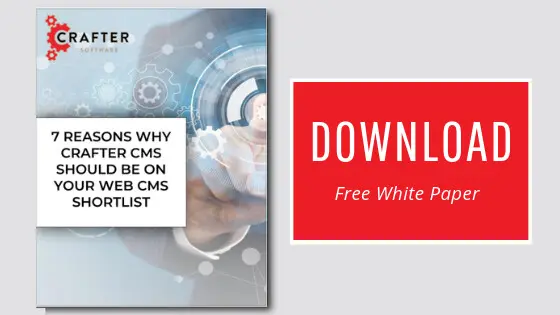Migrating from Drupal 7? Drupal 9 is Not the Only Answer

Sara Williams

Content management software has undergone quite a few changes over the years. While the primary driving force behind the constant innovation has been the needs of the customer and the opportunities provided by the cloud, some platforms haven’t entirely adjusted with the times.
The present, and the future of content management, is a headless one, emphasized by API-first platforms that connect multiple frontends to a scalable, backend content repository.
Many legacy platforms have made adjustments in an attempt to keep up, but the reality is the train has already left the station. As it speeds along faster and faster towards an increasingly connected omnichannel world, it becomes more apparent that traditional CMSs are doomed.
Drupal, one of the pillars of the traditional CMS landscape continues to require long, excruciating migrations for every upgrade. Drupal’s standard features made it one of the ideal platforms for easy content authoring and editing, perfect for blogs or single channel websites.
Unfortunately, this isn’t enough to cope with the influx of smart devices filtering into our world.
Drupal has announced a new version of their platform known as Drupal 9 and encouraged users to migrate. Instead, now may be the time to migrate from Drupal to a hybrid headless CMS like CrafterCMS.
The Downsides of Traditional CMSs
Legacy CMS platforms have more than earned their place on the web over the years. Platforms like WordPress and Drupal were some of the first to make content management easy.
A system to not only store all of your content in one location but also make it easy to hit a button for the content to “go live”.
Drupal especially has some features that made it more appealing than WordPress. It was great for larger, more complex websites with lots of pages and content.
As an open source platform, Drupal also relies on a strong community of users who can offer support and extensions to get the most out of the CMS. Unlike WordPress, Drupal also didn’t have as many security issues and was favored for this by larger companies.
As a traditional CMS platform however, several downsides are becoming more apparent today.
Traditional CMSs weren’t built as API-first platforms, so they find it challenging to connect seamlessly with different frontends. An omnichannel world where customers want to access content via smartwatches, speakers put these traditional platforms at a disadvantage.
Drupal also has some other issues that are unique to its platform.
First of all, it is more complicated than other CMSs as it has a steep learning curve compared to others. If your team is not as technical, then Drupal isn’t a great option since at a minimum you need knowledge of PHP, SQL, Javascript, HTML, CSS and Drupal themes to manage things.
Drupal was made by developers for developers. To get the most out of the platform requires help from your IT department at every turn. Plus, the constant updates mean that you need to invest time upgrading with every new version that gets released.
And as a coupled CMS, where content authoring and content delivery are within the same database-based system, Drupal doesn’t scale well within today’s elastic cloud environments.
What About Headless Drupal?
However, could Drupal’s headless version help to solve the problem of not being API-first?
While Drupal can connect with multiple frontends using REST APIs, the platform wasn’t created for this purpose originally. Choosing the headless option creates a new set of problems that can prove even more challenging to overcome, including unclear documentation and a lack of user support. At the end of the day, it is still a coupled CMS.
The Pain of Drupal 8 (or 9) Content Migration
The process of migrating from any version of Drupal can be time-consuming. Unfortunately, it’s the only way to receive necessary upgrades to the platform. Not to mention, Drupal stops supporting previous versions at some point after it releases a new one, meaning that you are forced to migrate or lose the capabilities of your content management system.
In response to the cost savings that many companies will be looking for as a result of COVID-19, Acquia has extended the end of life support for Drupal 7 for an extra year. Many of these users were already expected to migrate from Drupal 7 to Drupal 8 or the current Drupal 9. While this response was made in good faith, it begs the question, doesn’t the entire Drupal system already place an unnecessary financial and time burden on its users?
Rather than kicking the can down the road, when the Drupal community will eventually have to migrate and spend time and money doing so, and then in 3 years time, the fiasco starts all over again when Drupal 10 comes out, now is the ideal time to migrate to another solution.
Even though it was great for building large websites in the past, Drupal’s architecture means that it has fallen behind the times. Large enterprises and independent developers alike are embracing a newer approach to build websites using modern technologies such as React, GraphQL and Git. A PHP-based CMS like Drupal isn’t going to keep up with the needs of the modern developer.
In addition to all of this, the latest version of Drupal, Drupal 9 is a complete change to the framework. The migration process isn’t straightforward and becomes a complete rewrite for developers. If you need to rebuild your entire website anyway, then you are better off relying on a CMS platform that is built using a modern tech stack and provides complete developer freedom so you won’t need to migrate ever again.
CrafterCMS: The Open Source CMS Platform of the Future
CrafterCMS is an open source hybrid headless CMS with all of the tools and workflows for delivering content on multiple channels. It allows an entire team to get the most out of your CMS, empowering marketers, developers and operations. If you’re worried about making additions to your CMS to create added functionality, then look no further than Crafter Marketplace. Not only is this a replacement for Drupal modules, but it also provides the same level of innovation and extensibility for your CMS.
Do it for Your Marketers
Drupal lacks the user-friendliness that makes it easy for your marketers to create and manage content. As a hybrid headless CMS, Crafter not only makes it easy to connect with whatever frontend available with APIs, it also gives content authors everything they need to create, edit, and preview content with advanced drag/drop and WYSIWYG authoring tools.
CrafterCMS vs Other Headless CMS Platforms
Other headless platforms can provide you with more flexibility and eliminate the migration headache that comes with a Drupal CMS. Still, CrafterCMS’s robust architecture and Git-based approach to content management make it the better choice.
For those that enjoyed Drupal’s open source framework, Crafter is also open source with a growing community of developers and users.
CrafterCMS leverages a Git-based architecture that allows developers to work with tools they already know and enjoy. With DevContentOps, the silos that previously made it difficult for marketers and developers to work together are now eliminated.
Choosing to migrate from Drupal may be a tough decision if you’ve been using Drupal for your business since the beginning. However, as we move towards a more omnichannel world, then you need to rely on a CMS that offers everything you need for the web of today and tomorrow.
For more on why you should consider CrafterCMS instead of Drupal, take a look at our whitepaper Seven Reasons Why Crafter Should be on Your Web CMS Shortlist.

Related Posts

Websites Are Dead?

Mike Vertal

No-Code Experience Building for Marketers & Designers

Amanda Lee

Is Your CMS MACH-Ready? A Practical Guide for Enterprise Architects

Sara Williams

Composable DXP vs Traditional DXP: Why Enterprises Choose CrafterCMS

Amanda Jones










